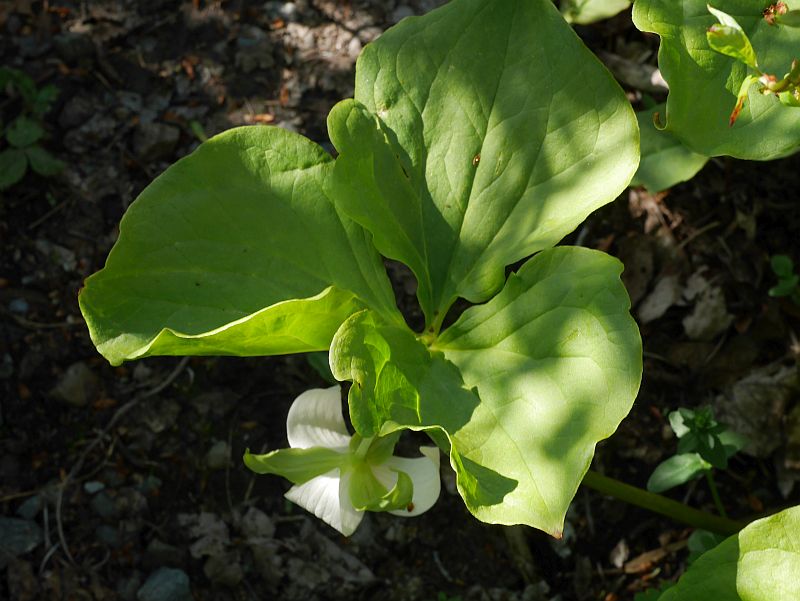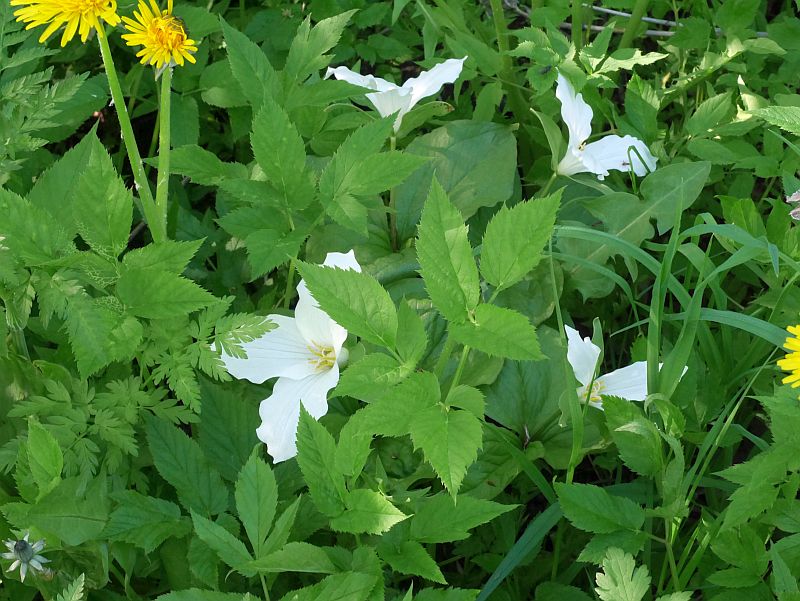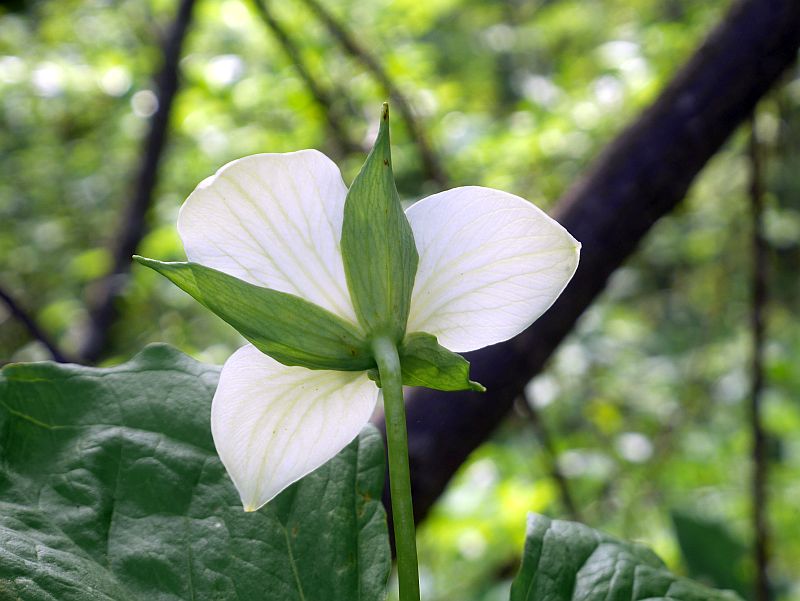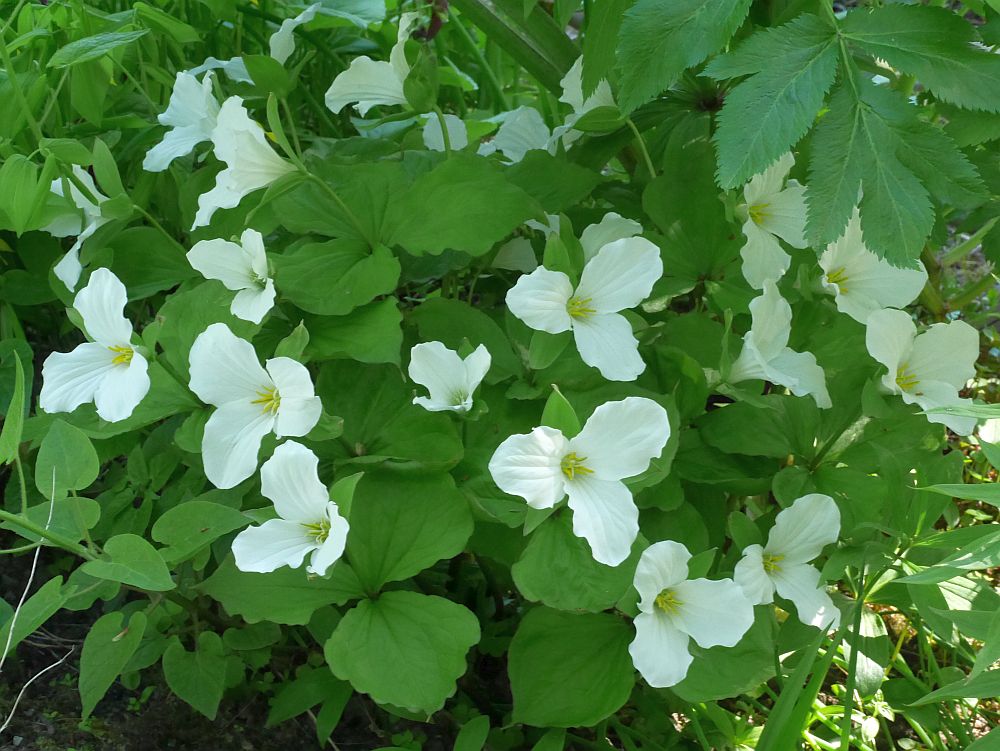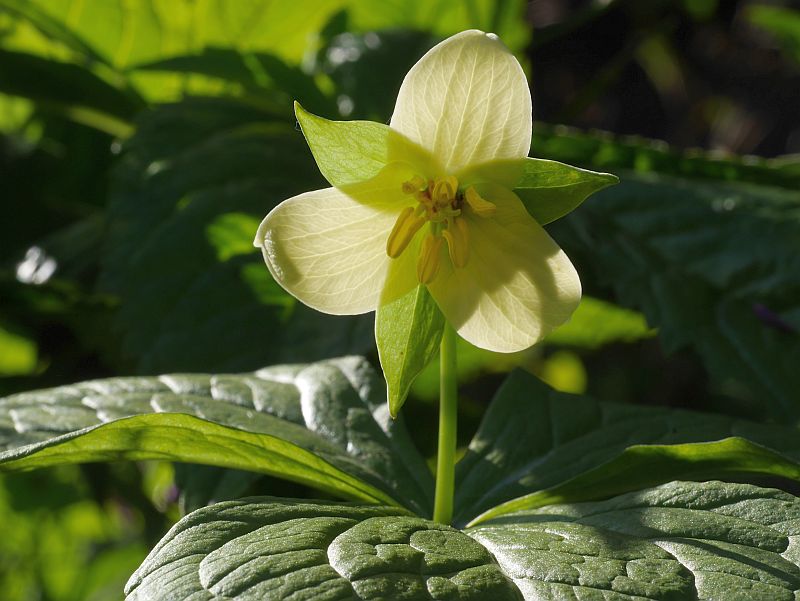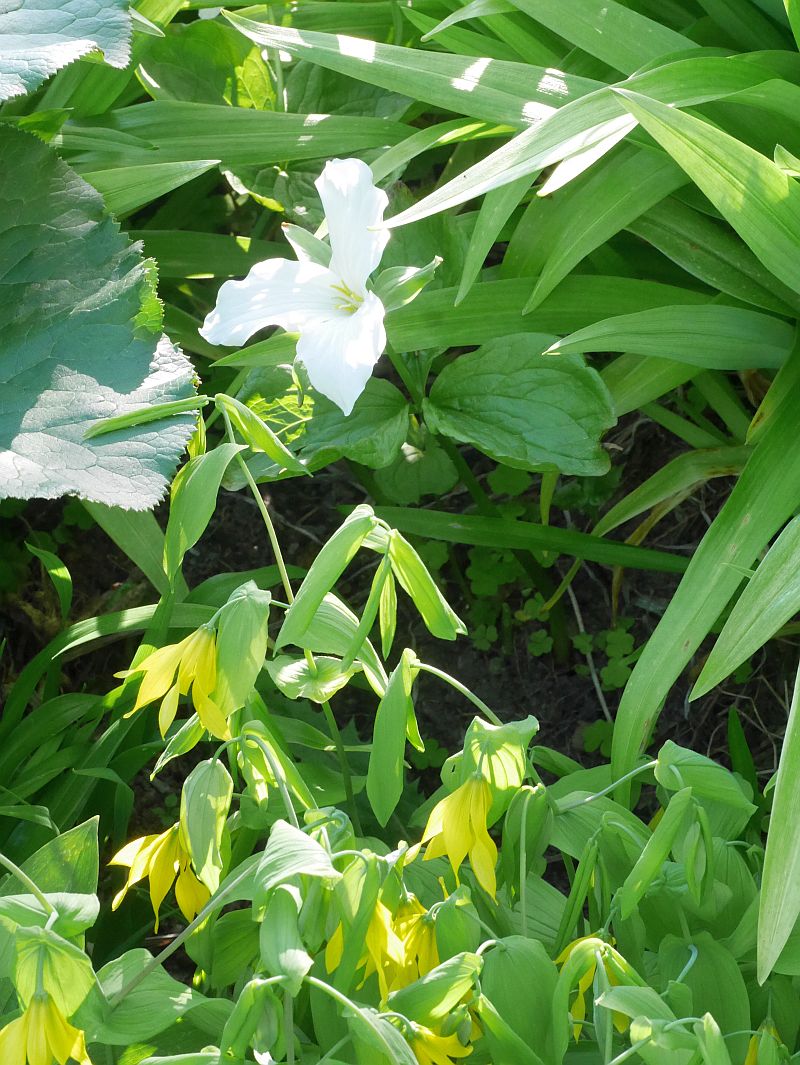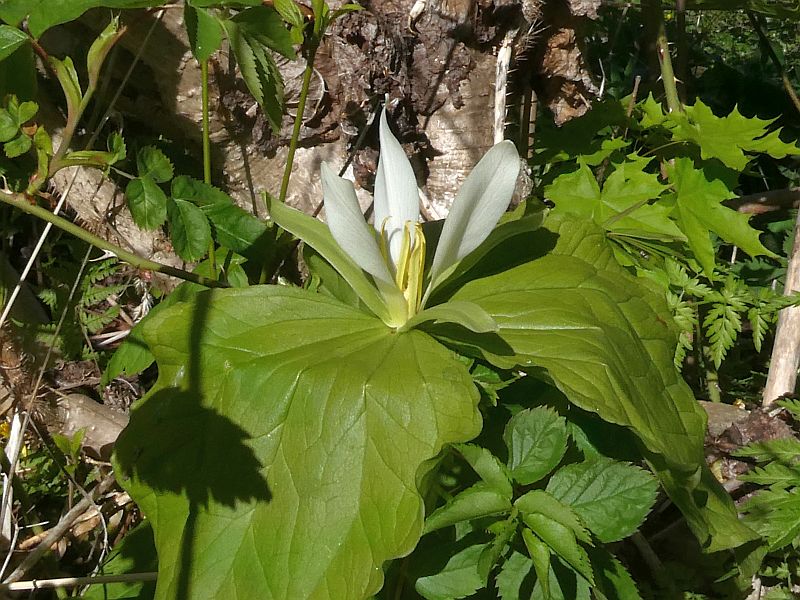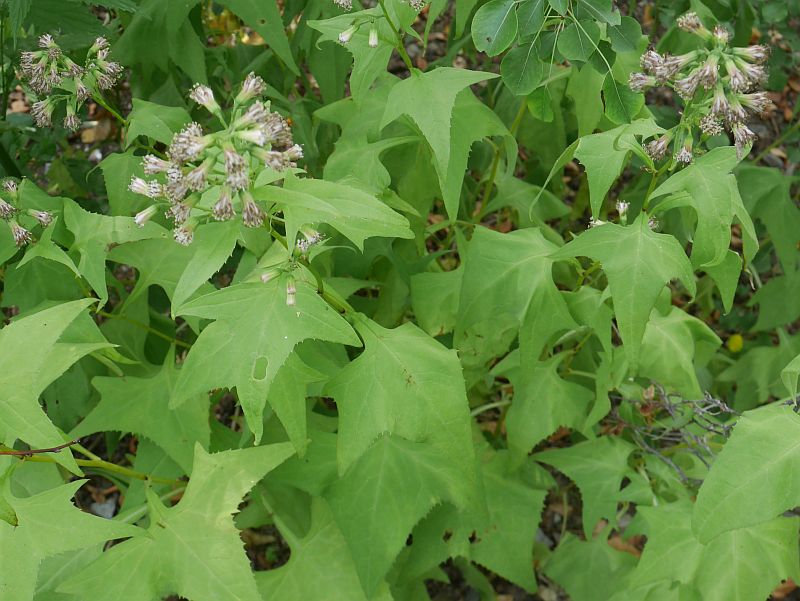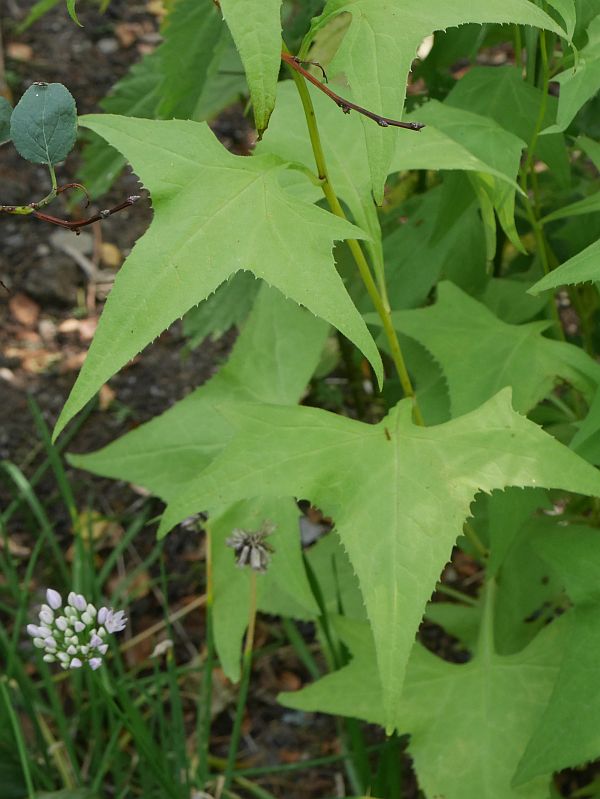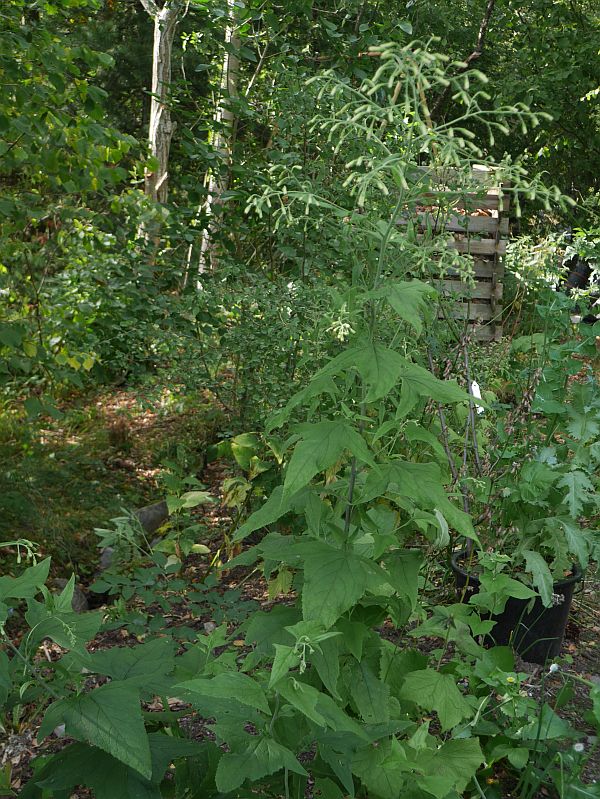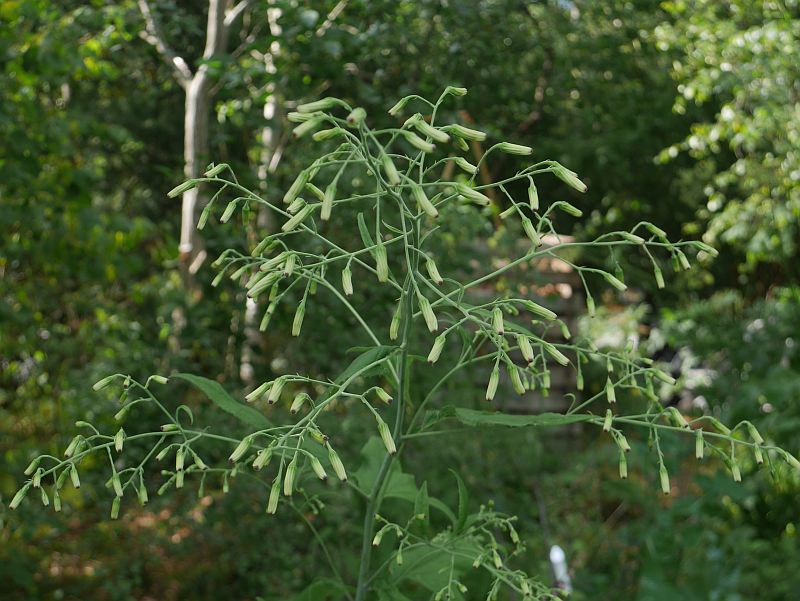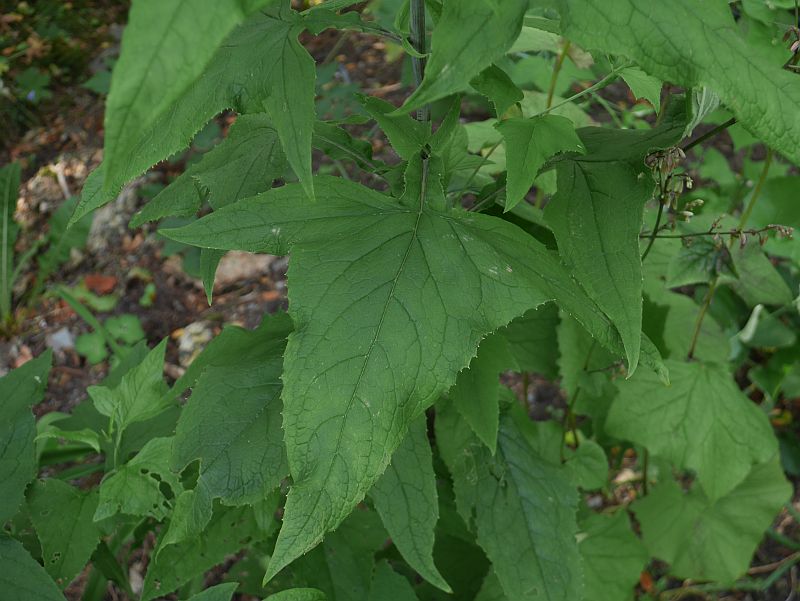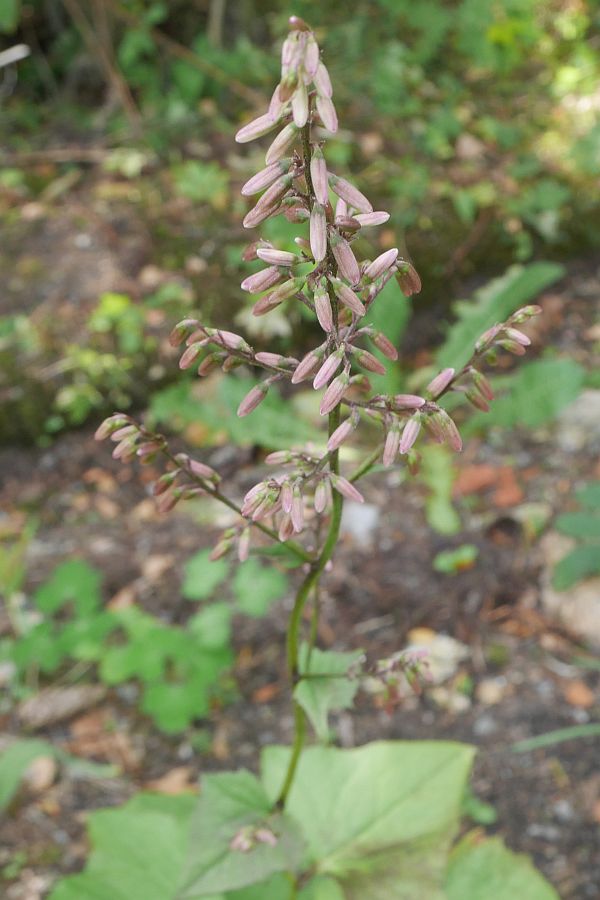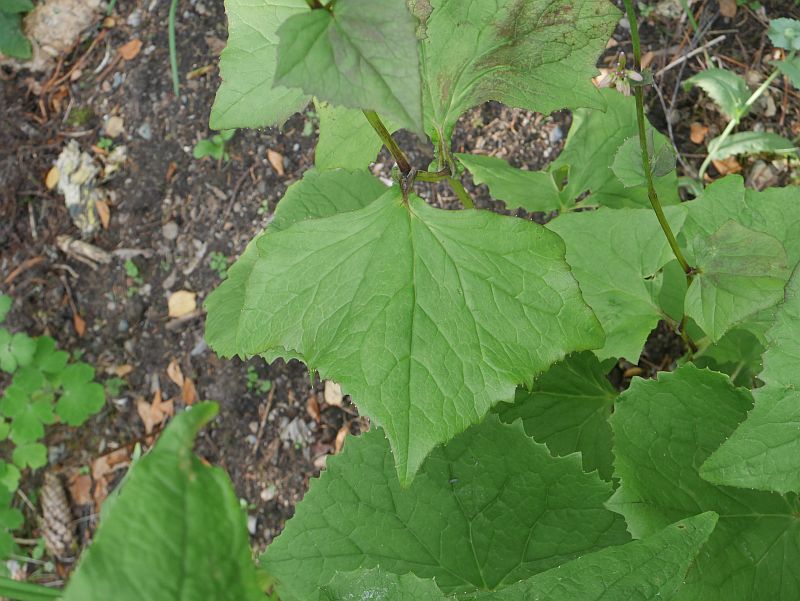A new species in the garden this year is the Pacific waterleaf or slender-stem waterleaf ( Hydrophyllum tenuipes) from California, Oregon, Washington and British Columbia. It was a food plant of First Peoples on the West Coast. Mine came courtesy of the Gothenburg Botanical Garden.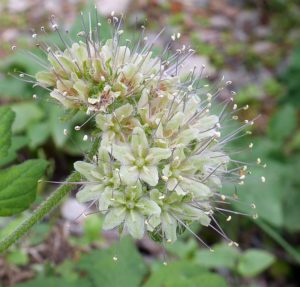

Indian salad or Virginia waterleaf (Hydrophyllum virginianum) is also currently in flower and features elsewhere on this blog, being one of my favourite spring salad plants and one of the 80 in my book Around the World in 80 plants. 


I’ve failed several times to establish Hydrophyllum canadense, the species I’d expected to be easier. The other I grow is Hydrophyllum appendiculatum which is biennial and not yet in flower.
Category Archives: woodlander
Trillium days in the edible garden
I’ve been unable to find any ethnobotanical documentation that native americans used Trilliums (wakerobins) for food. They were rather considered as medicinal plants (see http://naeb.brit.org/uses/search/?string=trillium) and was also thought of as a poisonous plant by some tribes. The roots do however contain saponins. Nevertheless, it is used and considered to be edible (cooked as greens and used in mixed salads by modern day foragers) and this is also mentioned in some foraging books. It is a protected plant in some areas and I do not recommended to harvest it from the wild as it is vulnerable to overharvest as it takes many years to reach the flowering stage..
I started collecting Trilliums as potentially interesting edimentals, and have eaten a few leaves (as reported the taste is a bit like sunflower seeds) and I use flowers to decorate salads. I would never be able to eat a lot of it anyway and wouldn’t do so either to be on the safe side and don’t recommend others do so either.
We’re now at the height of Trillium flowering season here, so here’s a few pictures taken on 1st June. Please let me know if you see any wrongly identified plants (there may well be hybrids in here!)
Parasenecio hastatus

It’s a wild species in China, Japan, Korea and the Russian Far East. My most comprehensive Japanese foraging book says something like this (thanks to Chris Sonnenschein for the translation): “shoots are harvested when 20-30 cm long. Then when ready to cook, like asparagus, break/snap the shoots with your hand and discard the more woody end. Dice up the remainder into chunks. Boil in salted water. Rinse. Parboil in normal water just briefly. Eaten with Bonito flakes (fish), Soy Sauce & Mayonnaise. Also the leaves from the new shoots (this year’s growth) can be eaten, especially as tempura, through summer”.
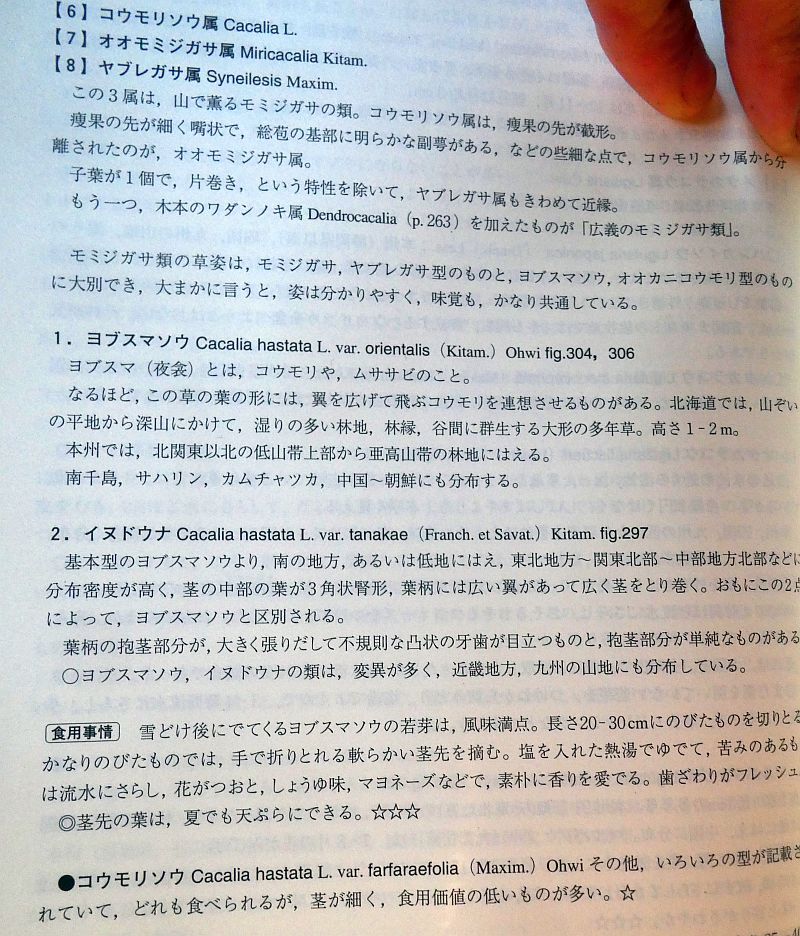
I’ve posted summer pictures of hastata in an earlier blog post, please see http://www.edimentals.com/blog/?p=18758.
I wouldn’t recommend eating a lot of these as they may contain alkaloids, but they are an interesting woodlander for occasional harvest from a species rich forest garden.
I have 5 or 6 Parasenecios in the garden currently including the variegated cultivar Parasenecio hastatus subsp orientalis “Shiro Sankou Hakikomi Fu”
Parasenecios
See earlier blog on shidoke here: http://www.edimentals.com/blog/?p=6340


